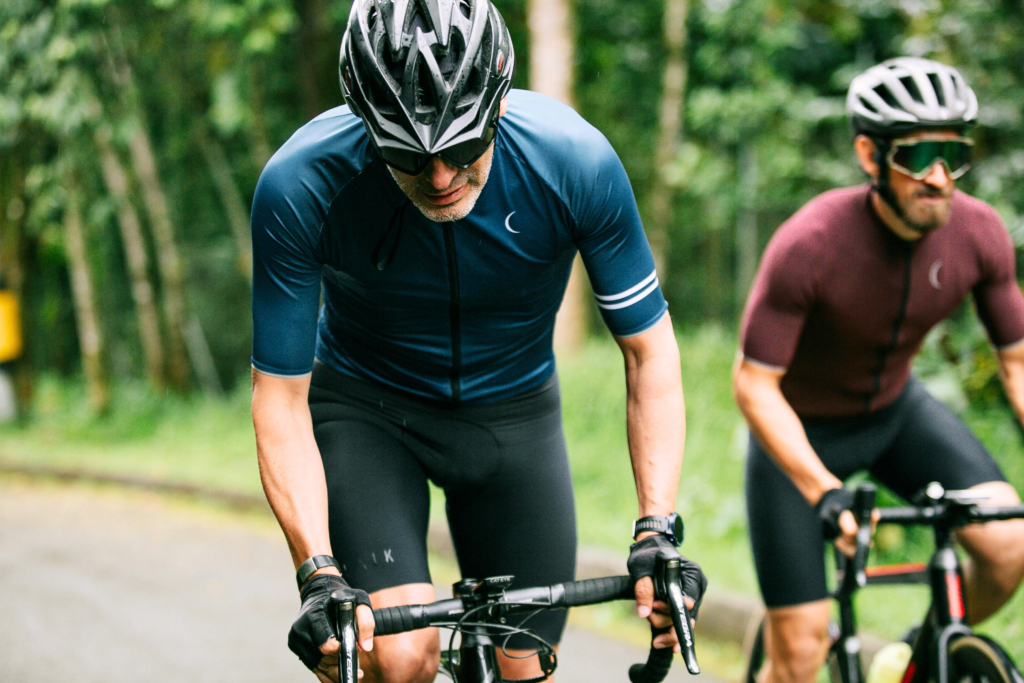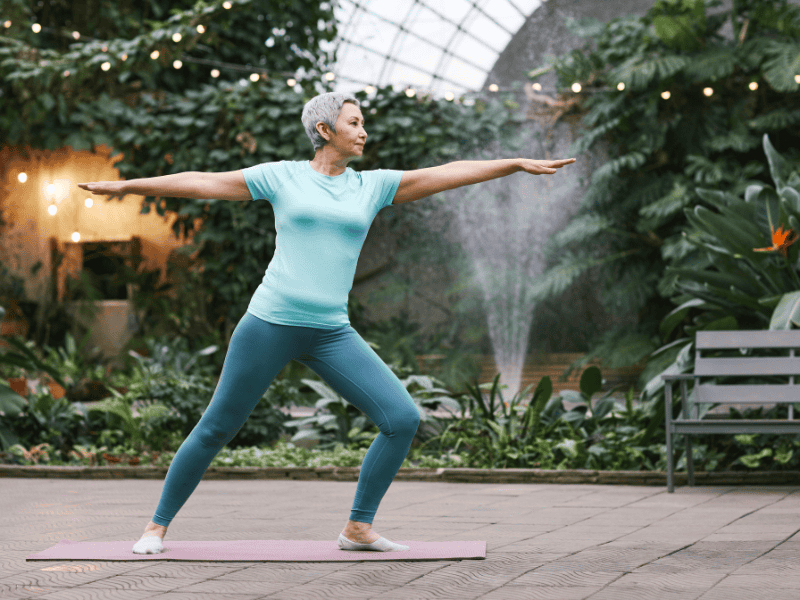
Do you believe you’re too old to start cycling?
Or do you think that, after cycling for years, it’s time to slow down and take it easy?
You, of course, can take it easy; there’s nothing wrong with that.
You don’t have to push yourself to become a performance-focused cyclist.
But if your age has got you thinking that you can’t remain fit and active through the years, then consider these master cyclists (that’s typically any cyclist over the age of 40).
Many more cyclists have refused to let their age slow them down and this is by no means an exhaustive list, but I hope these master cyclists can inspire you to begin and continue riding your bike, no matter your age.
So how can you approach cycling as you move through the years?
In this post, we’ll dive into the 4 things to do to help you build and improve your cycling fitness as a masters cyclist.
Let’s get started.

Whether you’re a runner looking for running tips or a cyclist searching for cycling advice, this site is here to help you elevate your fitness game.
Affiliate Disclosure: I’m here to help you grow as a rider and runner. So to keep things running smoothly and the content free, I participate in the Amazon Services program and select affiliate networks. So, when you click on those affiliate links, I earn a small commission at no extra cost to you.
4 ways you can stay fit with masters cycling in your 40s, 50s, 60s, and beyond

Do one high-intensity cycling session a week
With each passing year, our bodies change, and you might notice it’s a bit harder to catch your breath when you’re on your bike. That’s because your body’s ability to take in oxygen and deliver it to your muscles decreases over time.
Oxygen gives us the energy to pedal our bikes. And, it helps break down the glucose in our bodies into the energy our muscles need to keep going.
But here’s the good news: We can train our bodies to use oxygen more efficiently. How? By adding just one high-intensity ride to our weekly cycling routine. That may be a HIIT cycling session or some tempo intervals. When we push ourselves during these rides, we’re teaching our bodies to work smarter, not harder.
So, the next time you’re out on your bike and start to feel like you’re running out of steam, remember this: one high-intensity ride a week can make all the difference, no matter how many birthdays you’ve celebrated.
Fast After 50: How to Race Strong for the Rest of Your Life
Fast After 50 is essential for endurance athletes wanting to stay fast and competitive as they age.
Joe Friel, America’s top endurance coach, leverages the latest research to show how runners, cyclists, triathletes, swimmers, and skiers can maintain peak performance past 50.
This book offers strategies for high-intensity workouts, strength training, recovery, cross-training, and nutrition.
Discover how to adapt your training, avoid overtraining, and continue racing strong—proving that age is just a number

Get a bike fit or get your bike refitted
Think of a bike fit like tailoring a suit—it’s all about making your bike fit your body.
A professional bike fit at a bike shop can involve various adjustments, such as lowering the saddle height or selecting an entirely different saddle. If you have smaller hands, moving the brake levers closer can give you better control and safety.
Even if you’ve been cycling for years, you might find that a less aggressive bike position can boost your comfort and endurance. Whether you have long legs, a short torso, or any other unique proportions, a professional bike fit will make your bike feel like a natural extension of you.
Getting comfortable with your bike through a proper bike fit makes your rides more enjoyable and lets you spend more time doing what you love for a smoother, more delightful cycling journey. So, go ahead and make that appointment—it’s worth every pedal stroke.

Respect the days when you don’t feel like riding
One of the greatest gifts of growing wiser is a deeper awareness of your body and its gentle whispers. You’re more attuned to its needs, strengths, and limitations.
And this awareness? It’s your secret weapon. It allows you to craft a more personalized and effective fitness routine, reducing the risk of injury.
Every day as a cyclist is a little different. Some days it feels like you can ride forever, and other days, your legs feel like jelly. When you’re tired or stressed, riding can feel like extra work. On those days, trust your body and adjust your workout accordingly.
Remember, pushing through could lead to a cycling injury, sidelining you from cycling for weeks or even months.
Listen to your body, and let it guide you to a healthier, happier ride.

Do 2 days of strength training

As we age, keeping our muscle mass becomes more challenging due to sarcopenia, the age-related loss of muscle tissue. A review in Aging Research Reviews emphasizes that regular resistance training is vital for combating sarcopenia and preventing falls in older adults (Smith et al., 2022).
Fortunately, much of this research focuses on sedentary adults, so it doesn’t have to apply to you. When inactive adults lose muscle size, strength, and power, it’s because they’re not moving enough, causing their muscles to wither away.
But here’s the good news: adding two days of strength training to your routine can preserve your muscle mass and keep your cycling performance strong and vibrant.
If you regularly ride your bike, you’re already working your leg muscles and likely have strong legs. But have you focused on strength training for the rest of your body? Without it, you’ll lose muscle size, strength, and power in those areas. Remember, you need to use your muscles to keep your strength.
Cycling is a full-body workout. Your arms on the handlebars connect to your shoulders, stabilizing your chest, back, and trunk. Your core stabilizes your pelvis, allowing more power in each pedal stroke. Your entire body works together to keep you balanced on the bike.
Finish Strong: Resistance Training for Endurance Athletes
Finish Strong is here to guide you with step-by-step instructions on the best moves specifically for cyclists.
Whether you’re a fitness newbie or a masters cyclist, Finish Strong will help you build strength and enhance mobility so you can keep riding strong, no matter your age.
Whether you’re new to cycling or have been cycling for years, your age doesn’t have to slow you down.
And I hope these tips help you remain fit, active, and injury-free.
And remember this advice from Kittie Weston-Knauer, who at 75 is the oldest female BMX competitor in the United States: “Every time you get on your bike, you win.”

